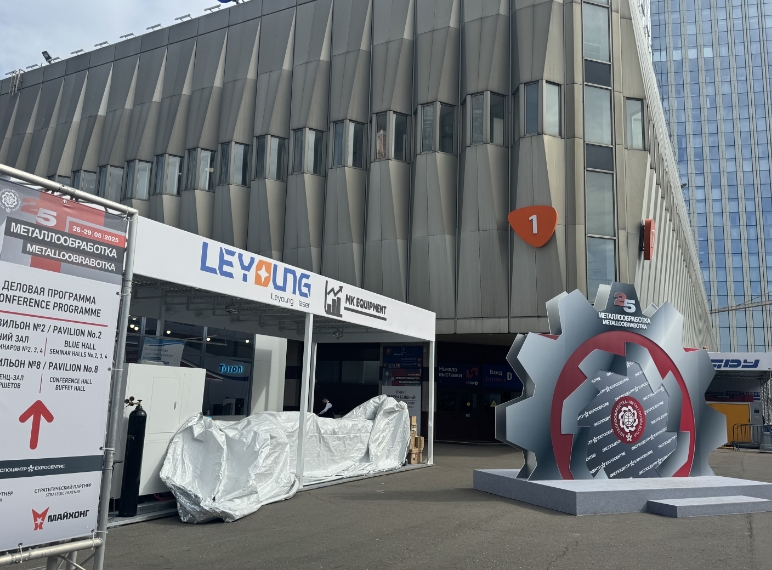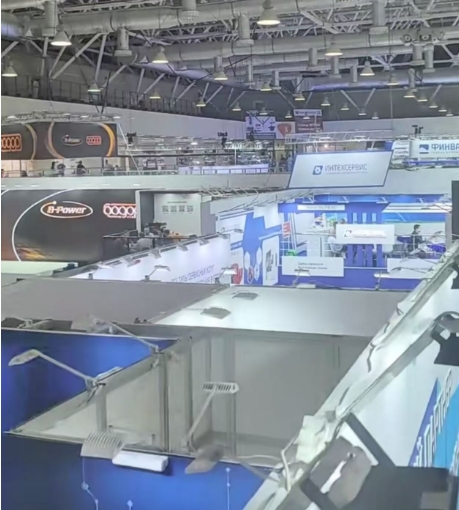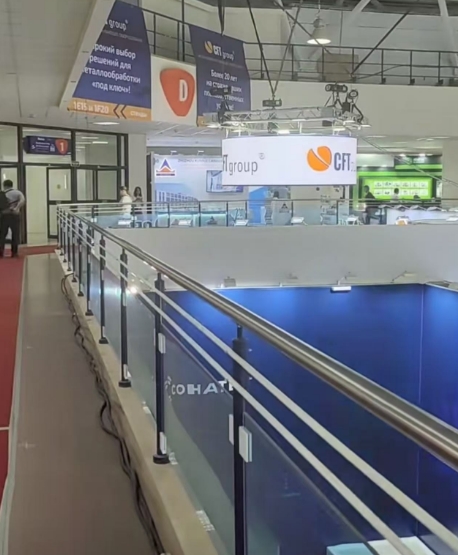Impressions from the 2025 Russia Metalloobrabotka Exhibition
May in Moscow – Here I Come!
In this ancient yet modern city, I had the privilege of attending the Russia Metalloobrabotka 2025. It was a grand event that brought together industrial elites from around the world and turned out to be an eye-opening journey for me.
Held from May 26 to 29, 2025, in Moscow, this exhibition is one of the most important professional events for the machinery manufacturing sector in Eastern Europe. It not only attracted exhibitors from across the globe but also gave visitors like us a valuable opportunity to witness cutting-edge technologies in the industry. For me, it was more than a technical learning experience—it was a relaxed and enjoyable adventure.

First Impressions: A Sea of Machine Tools
The moment I stepped into the exhibition hall on the first day, I was struck by an overwhelming sense of awe. The entire venue resembled a massive factory of the future, with high-tech machine tools neatly arranged in rows. Silver and blue machines filled the space, with Chinese and Russian flags hanging over various booths as equipment demonstrations ran continuously.
Together with my colleagues, we focused on exploring the latest trends in the machine tool industry. At each relevant booth, we engaged with local exhibitors, took photos, and jotted down notes. We saw precision CNC systems from Germany, high-speed machining centers from Japan, and automated assembly solutions from Italian manufacturers. But what impressed me most was the Chinese exhibitors' booths.

Made in China: Confidently Going Global
The Chinese exhibition area was vibrant and well-organized. Many companies showcased their independently developed products, ranging from high-performance CNC systems to intelligent cutting robots, from high-precision grinding machines to fully integrated machining centers. Some booths even had Chinese-speaking interpreters, and it was heartwarming to hear Russian visitors greet us in basic Chinese like “Nihao!” and “Xiexie!”
One Chinese engineer I spoke with shared his thoughts on recent changes:
“Years ago, when we exhibited in Europe, people often saw Chinese products as cheap but not high-end. That’s no longer the case. We’ve made significant strides in control systems, servo drives, and intelligent algorithms. This time, many Russian clients showed strong interest in our products—some even expressed a desire to cooperate on the spot.”
Chinese-made machine tools have indeed established a presence in the Russian market, and more Eastern European countries are starting to recognize the value and technological strength of Chinese products.
Tech Trends: Automation and Intelligence in the Spotlight
After walking around the exhibition, my biggest takeaway was that automation has become the dominant theme in today’s machine tool industry.
Nearly every booth was promoting “automation” and “intelligent solutions.” For instance, some companies demonstrated how AI algorithms could optimize machining paths to boost efficiency; others showcased robotic loading and unloading systems that allowed for fully unattended operations. Several companies also launched remote monitoring platforms, enabling users to track machine status in real time and receive predictive maintenance alerts.
One Russian exhibitor told me, “Our factory is currently advancing a ‘digital workshop’ project, aiming to enhance overall productivity through data collection and analysis.”
In addition to the technology, I also noticed a strong emphasis on sustainability. Many exhibitors highlighted features such as energy-efficient motors, low-noise designs, and coolant recycling systems—details that reflect the industry's growing commitment to sustainable development.

Cultural Exchange: Warmth in a Cup of Coffee
Though the main theme of the exhibition was technology, what left the deepest impression on me were the warm human interactions.
One afternoon, while resting at a nearby café, we bumped into several Russian exhibitors who were also taking a break. Noticing the “China” label on our badges, they cheerfully came over to say hello. We ended up chatting about the exhibition, our work, daily life, and even food.
Local Flavors: A Taste of Moscow
Beyond the exhibition, we also took time to soak in the local culture and flavors of Moscow.
Strolling across Red Square and admiring the colorful onion domes of St. Basil’s Cathedral felt like stepping into another world. In quaint street-side restaurants, we sampled authentic Russian beef stew, rye bread, borscht, and the unforgettable creamy mushroom soup. Of course, vodka was a must!
Moscow’s artistic atmosphere was also striking. The metro stations were like underground museums, adorned with murals, sculptures, and grand chandeliers. Even with just a short visit, we could feel the city’s deep cultural heritage.

Looking Ahead: A Blueprint for Win-Win Cooperation
We not only witnessed the latest machine tool technologies and industry trends but also made meaningful connections with like-minded partners. Most importantly, I personally felt the great potential for collaboration between China and Russia in the manufacturing sector. Whether in terms of technology or cultural exchange, we are finding more and more common ground.
During the exhibition, we held in-depth discussions with several Russian clients and reached initial agreements for future cooperation. In the coming months, we plan to move these projects forward and also invite more Russian partners to visit our factories in China to deepen mutual understanding.
One Exhibition, A Step Forward
In an increasingly globalized world, exhibitions like this one serve as bridges that connect us. They allow us to witness the power of technology while also experiencing the sincerity and friendliness between people.
I’m grateful for this opportunity to step out of the office and journey to the other side of the world to see how others do things—and to let others see the effort and progress made by Chinese companies.
The road ahead is long, but with an open mind, a spirit of continuous learning, and a drive for innovation, I believe we can go further and rise higher on the global stage.
This exhibition truly left a lasting impression on all attendees.


